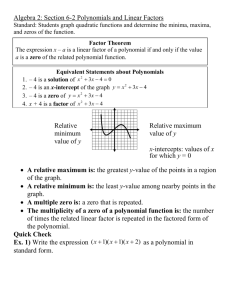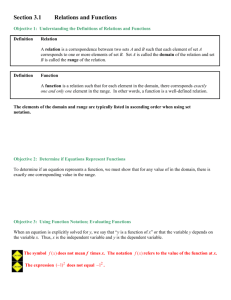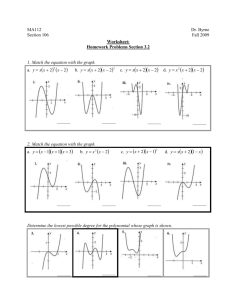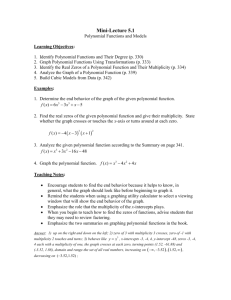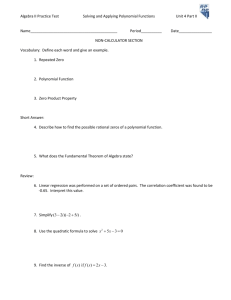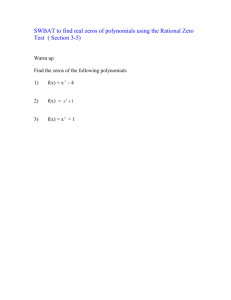10/19
advertisement
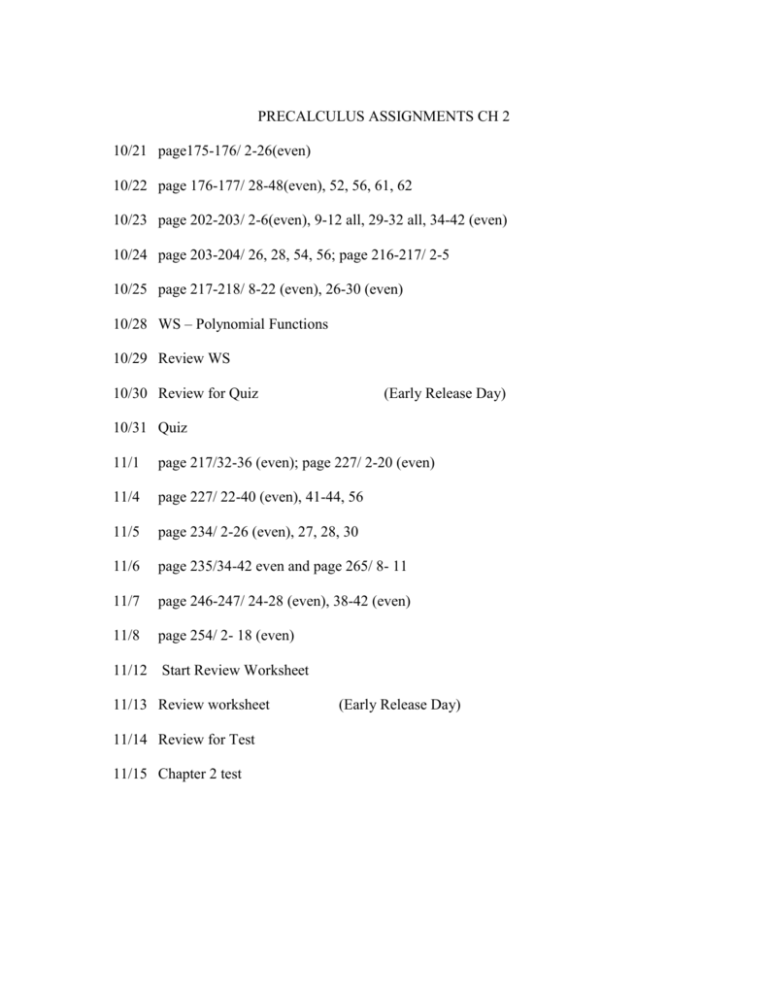
PRECALCULUS ASSIGNMENTS CH 2 10/21 page175-176/ 2-26(even) 10/22 page 176-177/ 28-48(even), 52, 56, 61, 62 10/23 page 202-203/ 2-6(even), 9-12 all, 29-32 all, 34-42 (even) 10/24 page 203-204/ 26, 28, 54, 56; page 216-217/ 2-5 10/25 page 217-218/ 8-22 (even), 26-30 (even) 10/28 WS – Polynomial Functions 10/29 Review WS 10/30 Review for Quiz (Early Release Day) 10/31 Quiz 11/1 page 217/32-36 (even); page 227/ 2-20 (even) 11/4 page 227/ 22-40 (even), 41-44, 56 11/5 page 234/ 2-26 (even), 27, 28, 30 11/6 page 235/34-42 even and page 265/ 8- 11 11/7 page 246-247/ 24-28 (even), 38-42 (even) 11/8 page 254/ 2- 18 (even) 11/12 Start Review Worksheet 11/13 Review worksheet 11/14 Review for Test 11/15 Chapter 2 test (Early Release Day) PRECALCULUS OBJECTIVES CH 2 Students will be able to: 1. identify polynomial functions and state the degree and leading coefficient. 2. write the equation of a line given two points in function notation 3. describe the transformations of functions and sketch the corresponding graph 4. find the vertex of a quadratic function using the formula or by completing the square. 5. describe the strength and direction of a scatter plot; understand the range of values for correlation. 6. graph a polynomial function of higher degree and apply transformations to the parent function. 7. describe the end behavior of functions using limit notation. 8. graphically find the local extrema and zeros of a polynomial function. 9. find the zeros of a function by factoring the polynomial. 10. state the multiplicity of each zero and describe the behavior of the graph as it crosses the x-axis at each zero. 11. use long division to divide polynomial functions and write in polynomial form or factored form. 12. use synthetic division to divide polynomial functions and write in fraction form. 13. use the Remainder Theorem to find the remainder when dividing by a linear factor and understand the significance of the remainder. 14. use the Factor Theorem to determine whether a linear factor divides evenly into a given polynomial function. 15. write a function in standard form given the zeros, degree and/or multiplicity. 16. compose a list of all possible rational zeros. 17. find the real zeros of a polynomial using long division and synthetic division. 18. add, subtract, and multiply complex number writing the answer in standard form. 19. graph a complex number on the complex coordinate plane. 20. determine the conjugate of a complex number and use it to write an expression in standard form. 21. write a polynomial in standard form given the degree, multiplicity, real, and complex zeros. 22. find all the zeros of a function and write a linear factorization of the function. 23. find all asymptotes and intercepts of a rational function, determine end behavior using proper limit notation, and sketch the graph of the rational function. 24. solve and graph a polynomial inequality. 25. solve rational equations in one variable and check for extraneous solutions.


